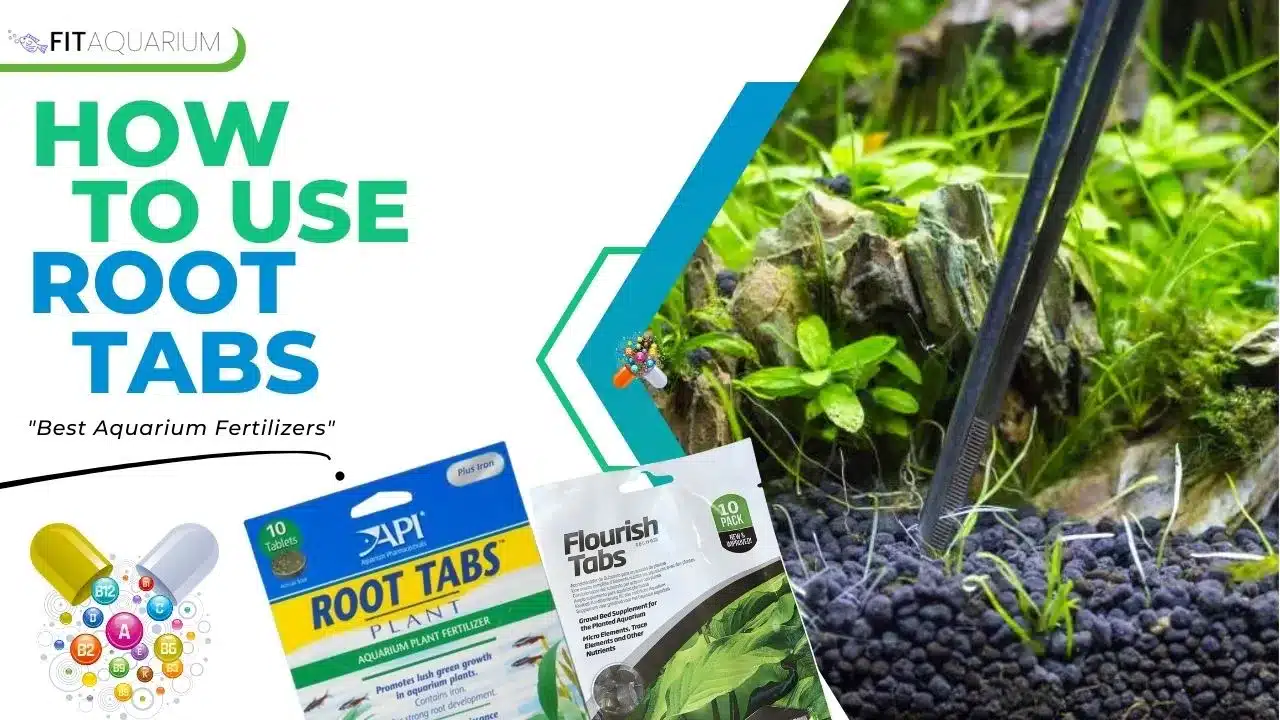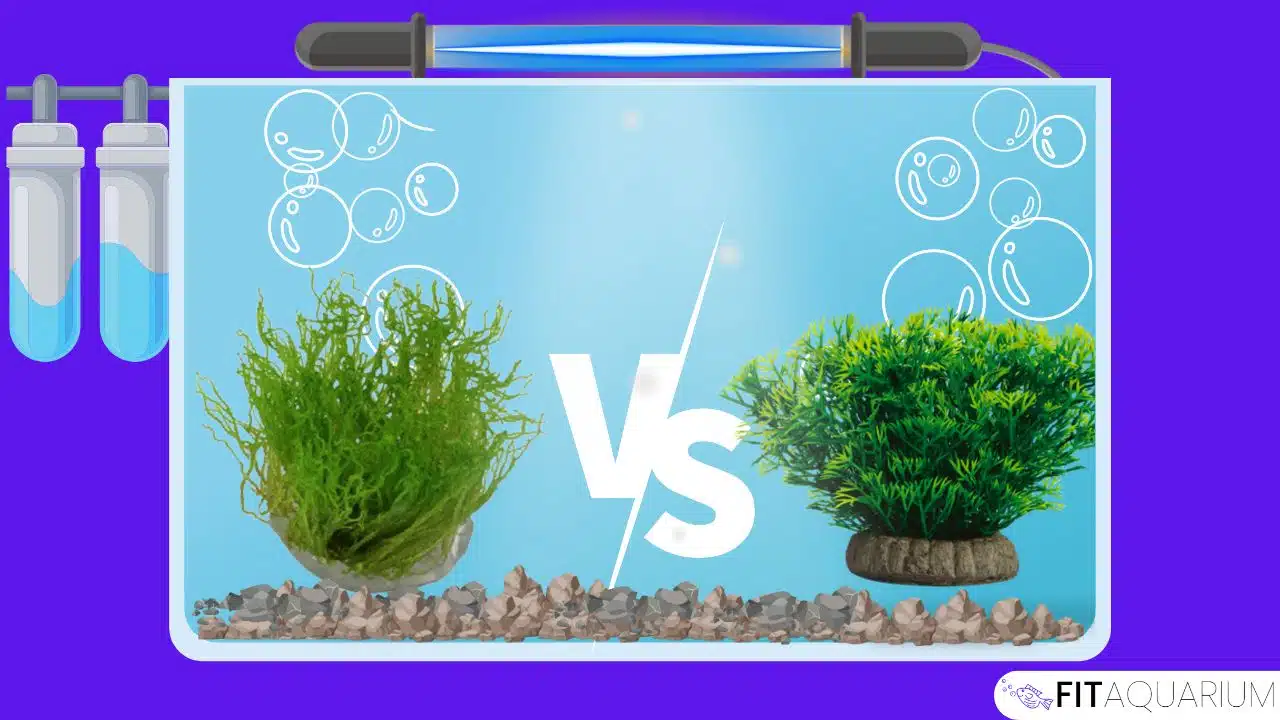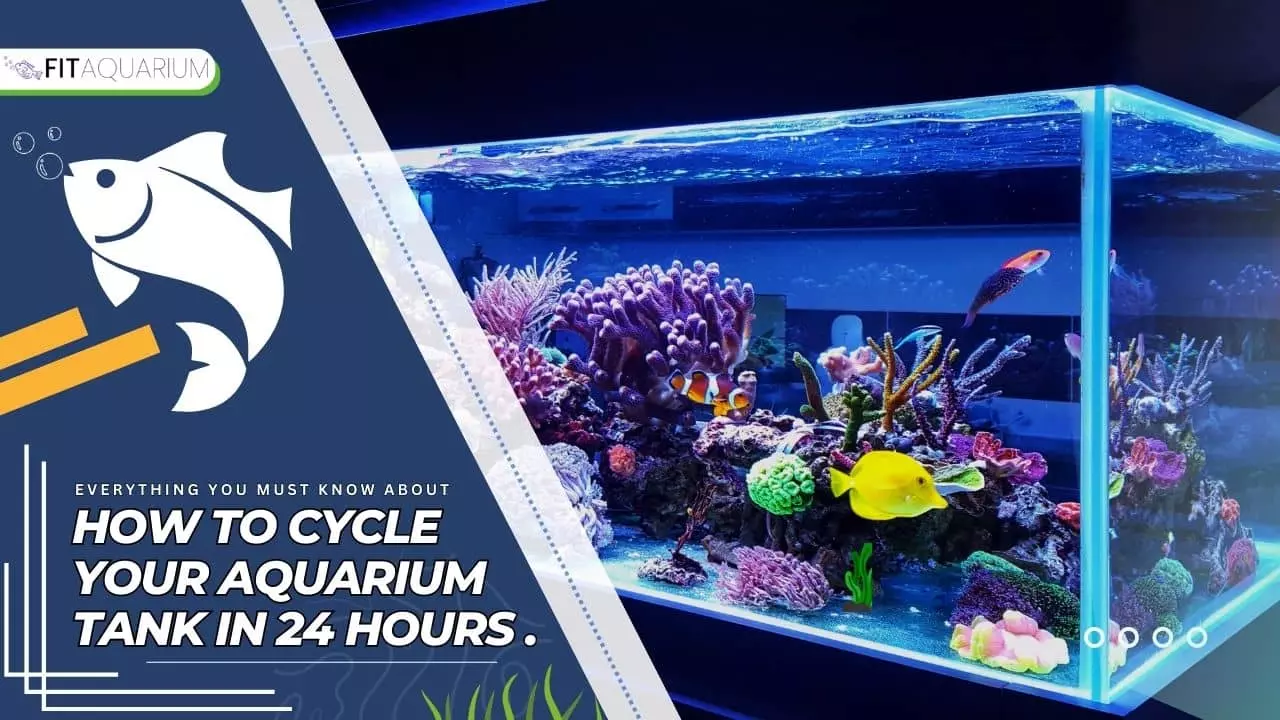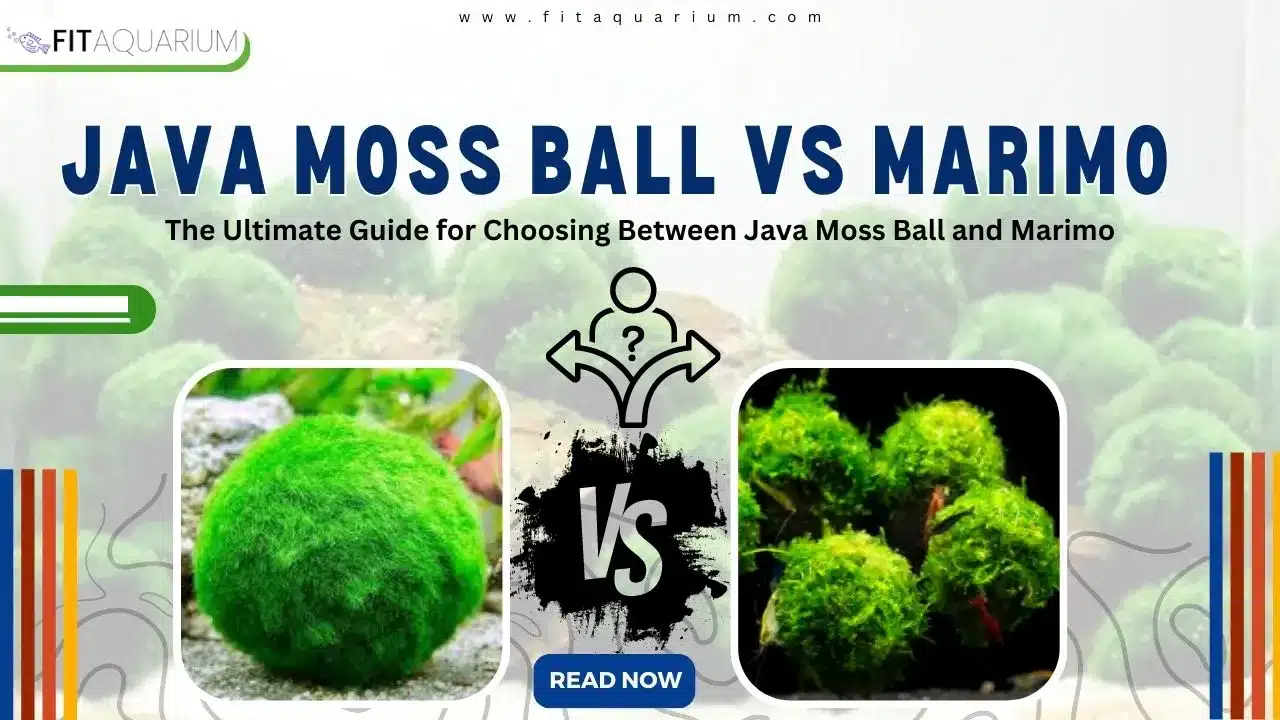How to Use Root Tabs to Fertilize Aquarium Plants
Are you in a situation where you want to know how to use root tabs for the sake of genuine fertilization and feeding to your aquatic plants?
In aquariums, it’s crucial to maintain the aquatic plants and to keep them healthy and strong. Similar to how humans require a nutritious diet to function well, plants need proper fertilization to develop adequately as well as to bloom.
Using root tabs is one of the ways to provide proper essential nutrients to aquatic plants and to create an incredible underwater terrain.
I have personally used root tabs in tanks over time. With a lot of experience in this field, I will guide you through a step-by-step process on how to use root tabs to fertilize and thrive the growth of plants in this article. So, without any further delay, let’s proceed towards our topic.
Table of Contents
Methods of Fertilization for Aquarium Plants
Typically, marine plants can be fertilized by two methods of fertilization. Such as water column fertilization and root zone fertilization.
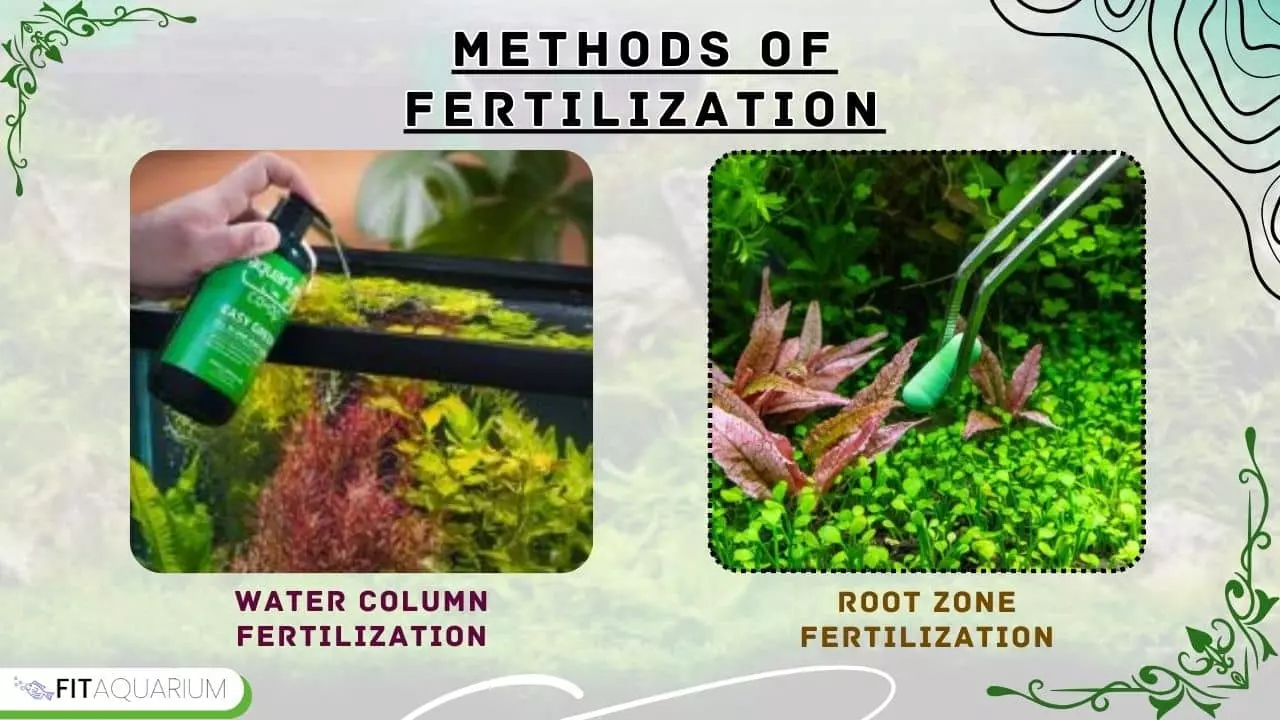
Water Column Fertilization
In the case of water column fertilization, water-soluble or liquid fertilizers are directly introduced into the planted aquarium. So that the poor nutrient plants just absorb it out of the water. This method of cultivation works well for stem plants that absorb nutrients through their stems and leaves instead of roots such as epiphytes like Anubias and mosses like Flame Moss.
This type of nutrient supply requires frequent dosing. The plus point is that the quantity of fertilizer can be measured accurately in the water column fertilization method.
Root Zone Fertilization
While most plants rely on root zone fertilization, in this method, a nutrient-rich substrate is supplied to the plants to stimulate them. For this purpose, fertilizers (such as root tabs) are inserted deeply into the substrate at the root level. These fertilizers dissolve in the substrate, providing ease to the nutrient-lacking plants to absorb their required nutrients according to their needs. In this type of fertilization, the actual amount of the fertilizer can’t be determined.
Cryptocoryne plants (such as Cryptocoryne wendtii and Cryptocoryne spiralis), Vallisneria species, bulb plants (such as tiger lotus), sword plants (such as Amazon sword and ozelot sword), and numerous rotala species are a few examples of specific root feeders.
Note: Some plants benefit from both root zone and water column fertilization to thrive such as floating plants.
What Are Root Tabs?
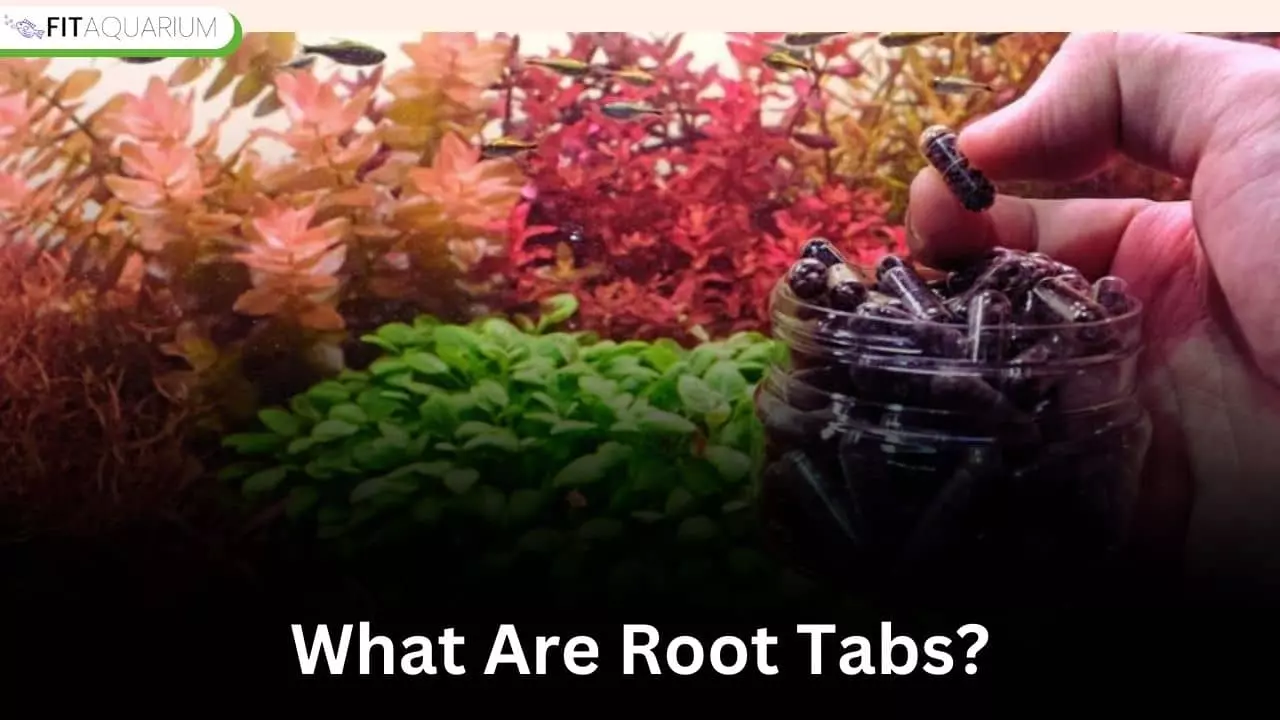
Root tabs, also known as root capsules or sticks, are used to fertilize aquarium plants that rely on root zone fertilization. These tablets contain all the essential nutrients that are vital for boosting plant growth. When root tabs are introduced directly into the substrate at the root level, they slowly penetrate and release nutrients over time, enriching the bottom of the aquarium tank.
Root tabs are composed of top mineralized soil (red clay) containing essential macro and micronutrients crucial for plant growth. Typically, the macronutrients required by plants include nitrogen, phosphorus, and potassium, and all these nutrients are available in the root tabs.
There are two major brands in this industry. Seachem flourish root tabs vs API root tabs. Seachem flourish root tabs are formulated to provide a steady and consistent supply of nutrients for 3-4 months while API root tabs are made for instant nutrient supply.
What are Root Tabs Good For?
As the root tabs are aquarium bottom fertilizers, their major advantage is that they supply sufficient nutrients for establishing aquatic plants. Furthermore, the ingredients in such root tabs play an important role in the healthy development of leaves, stems, and roots of aquarium plants, resulting in a vibrant appearance of your planted aquarium.
I personally prefer root tabs over other fertilizers for a variety of factors. These tablets are more affordable and easier to use as compared to other fertilizers.
Once these tabs have been introduced into the substrate of the aquarium tank, they continuously release effective nutrients and prevent over-fertilization. Additionally, root tabs are not harmful to underwater life.
How Many Root Tabs Be Used in A Fish Tank?
It’s crucial to give your tank plants the correct dosage. This is an essential technique to maintain an outstanding and healthy aquatic flora.
The quantity of root tabs depends on how densely your aquarium is planted. It is advisable to start with less. In normal circumstances, you can place tabs closer every 5-6 inches in a grid pattern.
However, to properly feed massive root feeders in your aquarium, like Amazon swords, you must arrange several root tabs in a circle.
How to Use Root Tabs in a Proper Way? (A Step-by-Step Guide)
To enhance the vibrant appearance of your aquarium’s plants, it is essential to use root tabs properly. So, let’s dive into step-by-step guidance.
When using any fertilizer in a planted aquarium, be sure to carefully read the manufacturer’s instructions.
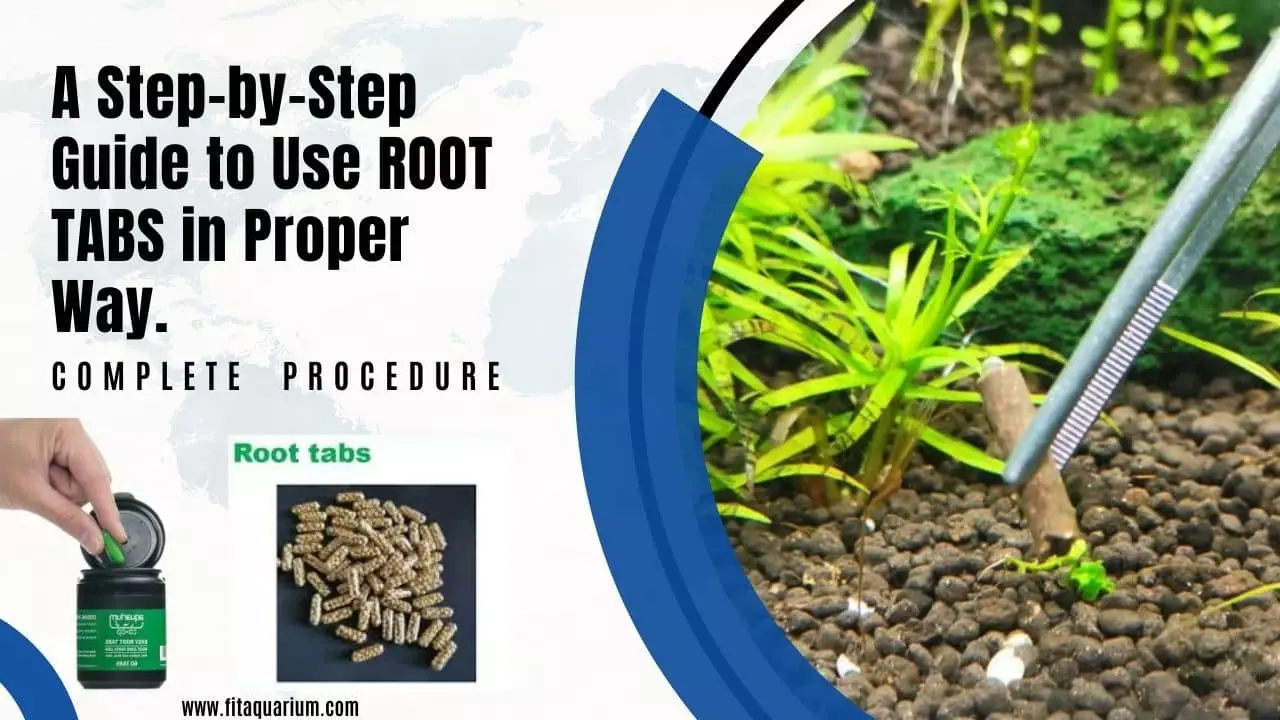
Step 0: First and foremost, make sure that you have gathered all the necessary equipment for the implementation of root tabs into the substrate. The equipment required for this process includes:
- Root Tabs: Root tabs themselves are essential as they serve as the primary source of nutrition for your nutrient-hungry plants.
- Planting Tools: Planting tools are important for the proper insertion of the tabs into the bottom of the aquarium. Using planting tweezers is the optimal choice for burying these capsules at the appropriate depth.
- Gloves: It’s advisable for those with sensitive skin to wear gloves to prevent direct contact with chemicals and fertilizers. However, this is optional, and those with non-sensitive skin may skip wearing gloves.
Step 1: Identify nutrient-deficient plants by their appearance. If they are displaying yellowing of leaves or have holes or spots on their surface, it indicates they are deficient in essential nutrients. These plants are struggling to thrive and require fertilization to promote healthy and robust growth.
Step 2: Use the appropriate dose of root tabs. However, over-fertilization can promote algae growth. Always ensure that you are using aquarium-safe root tabs.
Note: In order to prevent any potential harm to other aquatic fish companions, I recommend you choose root tabs with a lower copper concentration.
Step 3: Make insertion points close to the plants with poor nutrient access. Anchor the root tabs securely, either using a planting tweezer or your hands. Do not remove the substrate from the capsules. Otherwise, they will rapidly dissolve.
The depth of the root tabs should be adjusted based on the types of plants in your aquarium. As a general guideline, bury the tabs approximately 1 to 3 inches beneath the surface of the aquarium substrate. This allows the aquatic flora to access nutrients easily without difficulty.
Caution: Make sure you do not damage the plant root system while anchoring the root tabs.
Step 4: Finish by properly sealing the insertion points with the substrate. So that capsules stay below the substrate.
Aftercare Maintenance
It is very important to look after your aquarium plants once you have inserted the root tabs as fertilizer for aquatic flora. This is the beginning of the time when you’ll start to reap the rewards of your efforts.
The reason aftercare maintenance is essential is that it significantly impacts the charm and overall beauty of your aquarium.
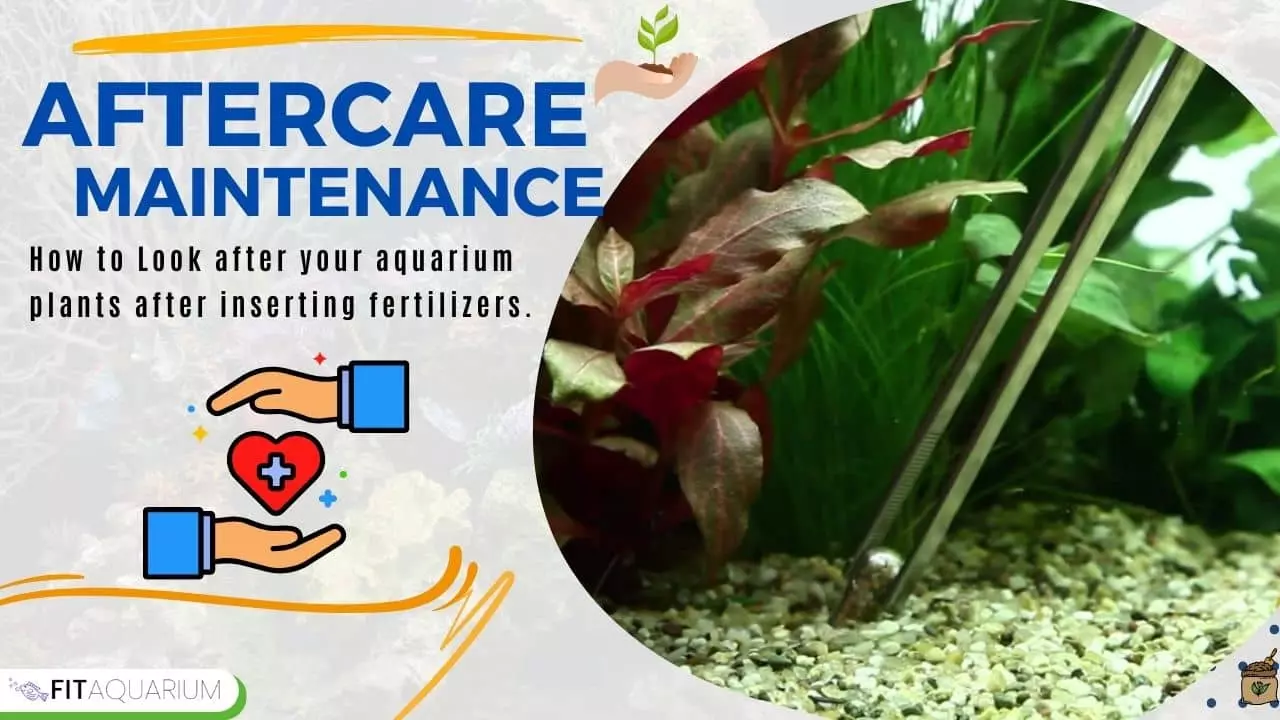
Monitor the plants
Carefully monitor the plants to gauge their response to the root tabs’ application. Plants will exhibit changes in their structure, either positive or negative.
Vibrant leaves indicate the effectiveness of your fertilizer. However, if you notice yellowing or decaying leaves, it suggests that your plant still requires additional nutrients for healthy growth. Take preventive measures to address these issues.
Maintain consistent and appropriate lighting arrangements as it significantly aids in the photosynthesis process. Additionally, regularly monitor water parameters such as temperature and pH levels.
Look out for Tab movement
Keep an eye on the movement of root tabs. Root tabs can change their position from their original point of insertion for many reasons. Such as the movement of your aquatic buddies or water flow can cause them to migrate from one point to another. It is possible that root tabs start floating over the surface of the substrate. In this way, root tabs rapidly dissolve in water. Which results in inappropriate fertilization of plants Therefore, it is very important to monitor the root capsules to prevent them from changing their positions.
Refill Root Tabs After an Appropriate Period
The aquatic flora has to be replenished after some proper time period. This specific time period depends upon many factors including, the brand of tabs, the nature of the substrate (nutrient-rich substrate or inert substrate), and the developing nature of plants.
If you’re using a local brand of root tabs, plants require root tab replacement frequently. however, if you are using any authentic brand of root tabs, obviously plants require fewer replacements such as once every three months.
Similarly, nutrient-rich substrate requires the replacement of tabs after a little bit longer interval. However, inert substrates such as sand or gravel need proper refilling on a regular basis. Because these sorts of substrates do not contain any nutrients on their own.
How to Prevent Root Tabs from Floating in Water Columns?
Just make sure that root tab capsules are unable to float on the surface after being inserted into the substrate. Sometimes, only burying them deeply may not be sufficient, and the tabs may start to float.
Actually, these capsules contain air, which can cause them to rise from the soil. To avoid this situation, create a hole in the capsule using a pin and then pinch the capsule underwater. Eventually, the air bubbles will escape. This is my personal recommendation for ensuring they remain submerged.
Are Root Tabs Safe for Your Aquatic Companions?
Many people are curious as to whether root tabs are compatible with their aquatic companions. The short answer is yes! Non-toxic root tabs are available that are safe for fish, shrimp, snails, invertebrates and others.
However, some root tabs have higher copper concentrations, which is not beneficial for aquatic life. Ensure that you are utilizing non-toxic and aquarium-safe root tabs.
Try to avoid DIY root tabs because, while they might be cost-effective, they could potentially contain high concentrations of nitrogen that could turn your plants brown. Seachem branded root tabs are the best for use in my experience.
Frequently Asked Questions
Here are frequently asked questions about the process of using root tabs.
-
Can you use root tabs and liquid fertilizers together?
Yes, you can surely use root tabs and liquid fertilizers together. Root tabs are ideal for root feeder plants such as Amazon Swords or Cryptocoryne (Crypts). While liquid fertilizers are designed for water column feeders such as Java Moss or any other moss. However, You’ll have to be very precise while using liquid fertilizers, as even a slight overdose can lead to significant changes in your tank water chemistry.
-
Are root tabs safe for shrimp?
It depends on how you use root tabs in your shrimp tank. Root tabs can be safe for your aquarium shrimp if you consider these important points
I. Look for labels like Shrimp Safe or Aquarium-Safe on the packaging.
II. Ensure that your root tabs are buried beneath the substrate to prevent them from floating.
III. Regularly check your tank water for any ammonia spikes. If you notice them, it indicates that your root tabs are dissolving directly into the water column. -
How often should you use root tabs?
It depends on several factors, such as the type of substrate you use, the density of your plants, and the plant species in your aquarium. Inert substrates like sand may need more root tabs per month. Densely planted aquariums naturally demand more frequent replacements. Also, do research on your plant’s particular needs. For example, plants with heavy root systems, such as sword plants, benefit from more regular root tab usage

